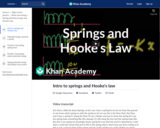
Introduction to Hooke's Law. Created by Sal Khan.
- Subject:
- Physical Science
- Physics
- Material Type:
- Lesson
- Provider:
- Khan Academy
- Provider Set:
- Khan Academy
- Author:
- Sal Khan
- Date Added:
- 07/15/2021

Introduction to Hooke's Law. Created by Sal Khan.

The difference between vectors and scalars. Introduction to distance, displacement, speed, and velocity. Created by Sal Khan.
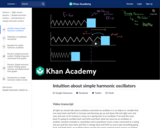
David defines what it means for something to be a simple harmonic oscillator and gives some intuition about why oscillators do what they do as well as where the speed, acceleration, and force will be largest and smallest. Created by David SantoPietro.

Intuition behind formula for thermal conductivity.
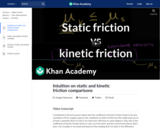
Why static friction is harder to overcome than kinetic friction. Created by Sal Khan.

This animation from KET's distance learning physics course demonstrates the mathematical formula for a scientific law as it applies to light.

Students use media resources and an in-class investigation to explore the types of energy within different types of systems. They also use the formulas for kinetic and potential energy to examine the path of a projectile.
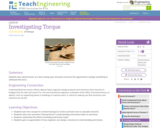
This lesson focuses on torsion as a force acting upon structures. Students will have the opportunity to design something to withstand this force.

In this video segment adapted from ZOOM, the cast builds a suspension bridge from a couple of chairs, some cardboard, and rope.

This is a hands-on activity to show that air takes up space even though you cannot see it.The goal is to understand that gas occupies space and relate it to real situations that prove it.

In this interactive activity from ChemThink, learn how ionic bonds are formed and how an ionic bond structure is represented by its formula.

In this video segment adapted from NOVA scienceNOW, follow scientists in their quest to understand how stable elements are made and how to create the elusive element 114.

Students investigate potential energy held within springs (elastic potential energy) as part of the Research and Revise step. Class begins with a video of spring shoes or bungee jumping. Then students move on into notes and problems as a group. A few questions are given as homework. The Test Your Mettle section concludes. The lesson includes a dry lab that involves pogo sticks to solidify the concepts of spring potential energy, kinetic energy and gravitational energy, as well as conservation of energy.
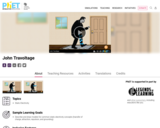
Make sparks fly with John Travoltage. Wiggle Johnnie's foot and he picks up charges from the carpet. Bring his hand close to the door knob and get rid of the excess charge.

This lesson introduces students to three of the six simple machines used by many engineers. These machines include the inclined plane, the wedge and the screw. In general, engineers use the inclined plane to lift heavy loads, the wedge to cut materials apart, and the screw to convert rotational motion into linear movement. Furthermore, the mechanical advantage describes how easily each machine can do work and is determined by its physical dimensions.

Student teams design insulated beverage bottles with the challenge to test them to determine which materials (and material thicknesses) work best at insulating hot water to keep it warm for as long as possible. Students test and compare their designs in still air and under a stream of moving air from a house fan.

Students learn how roadways are designed and constructed, and discuss the advantages and limitations of the current roadway construction process. They look at current practices of roadway monitoring, discuss the limitations, and consider ways to further road monitoring research. To conclude, student groups compete to design smooth, cost-efficient and sound model road bases using gravel, sand, water and rubber (representing asphalt). This lesson prepares students for the associated activity in which they act as civil engineers hired by USDOT to research through their own model experimentation how to best use piezoelectric materials to detect road damage by showing how piezoelectric transducers can indicate road damage.

Follow along in this video segment from ZOOM as 13-year-old Nick explains how he came up with a design, tested materials, and constructed his own cardboard chair.

ZOOM guest Amy wants to be a meteorologist and volunteers at a weather observatory. In this adapted video segment, she shows us instruments used to predict the weather and describes how air pressure affects weather patterns.

Visit with Andres during fiesta time at Paracho Michoacan, Mexico's "guitar town". As Andres shows in this video segment from ZOOM, guitar music goes beyond simple sound vibrations.